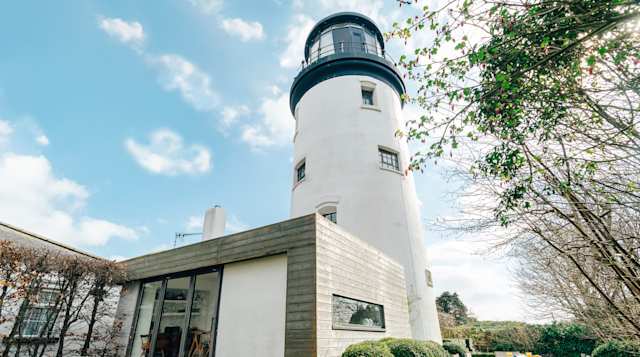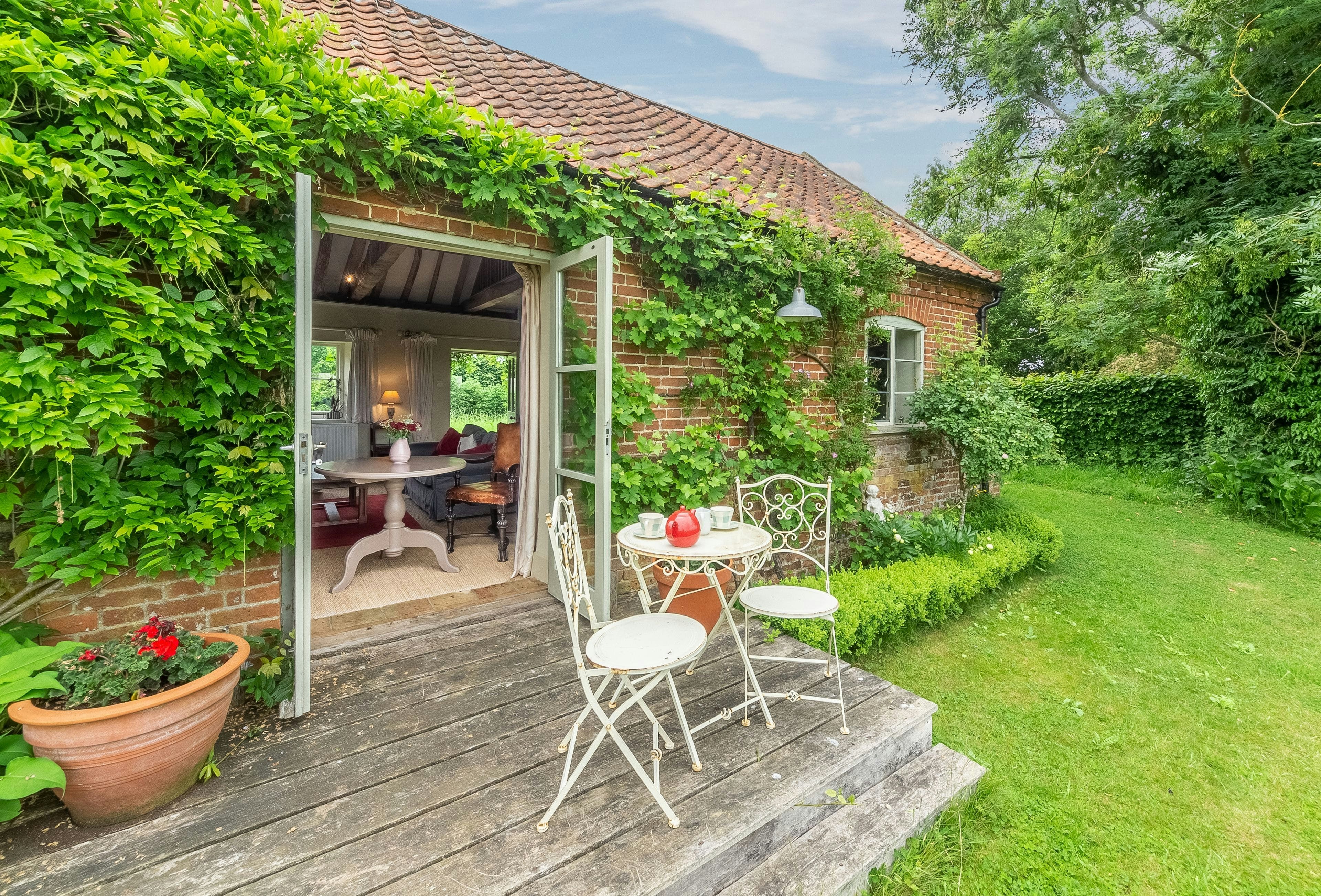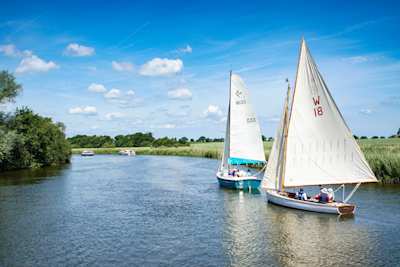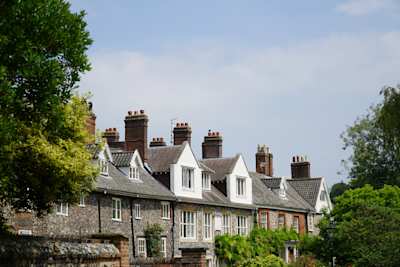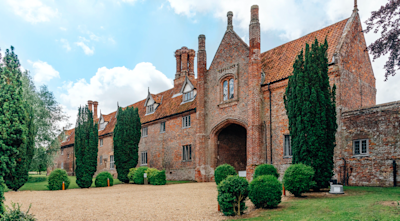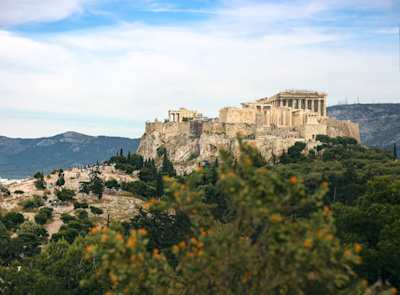Find Serenity in Norfolk With These Areas To Avoid & Other Tips
Away from the crowds, this peaceful corner of England offers a delightful escape in nature
~
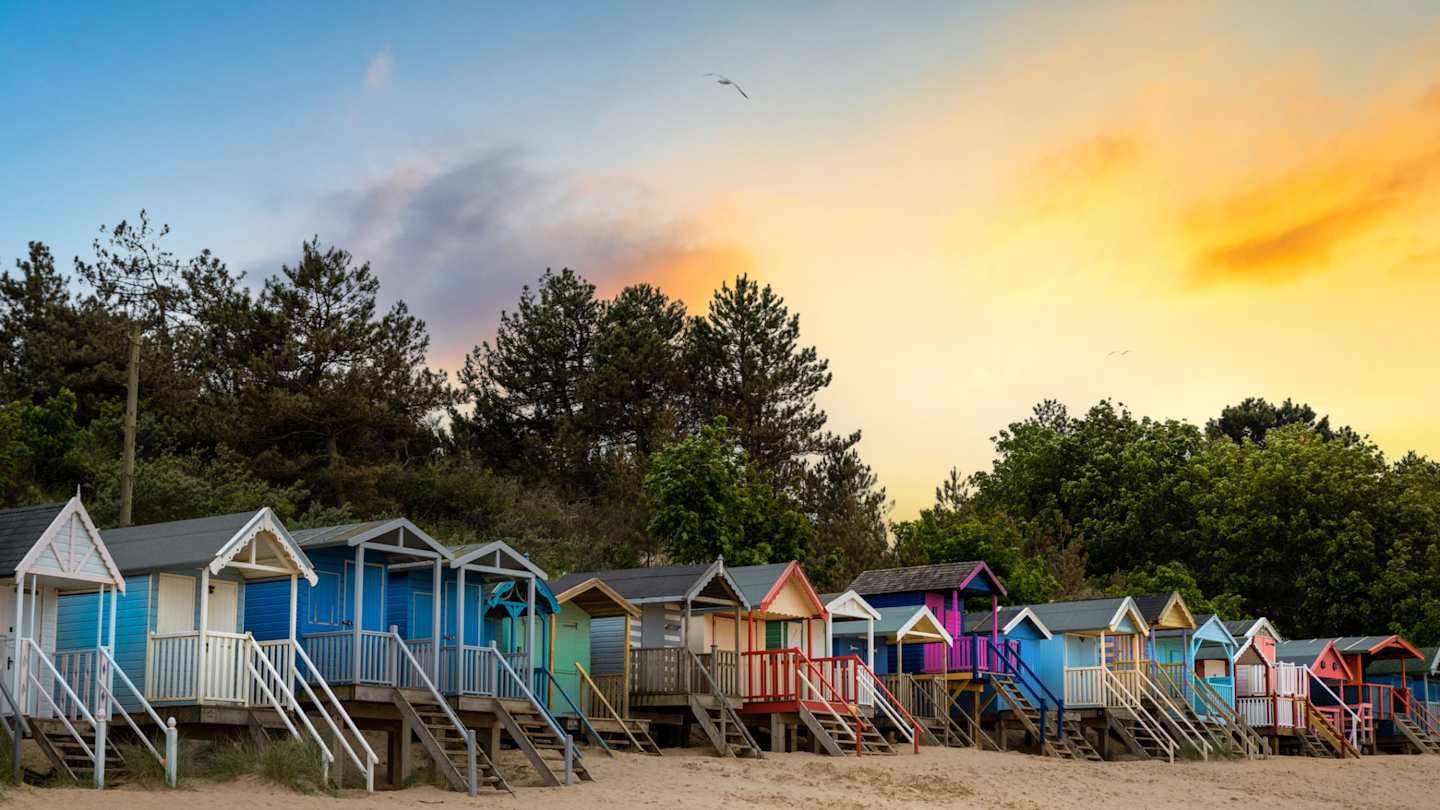
Norfolk is a wonderful destination for an outdoorsy holiday, and your itinerary will be packed with activities like walking, cycling, birdwatching and watersports – with plenty of opportunities for rest and relaxation in between all the action. But with its bucolic countryside and charming coastline, it comes as no surprise that Norfolk is such a popular holiday destination. Luckily for you, our travel experts at Plum Guide know all of its secret spots, and have put together this guide of areas to avoid in Norfolk, best times to travel, and other top tips and tricks.
Skip the summer for spring or autumn
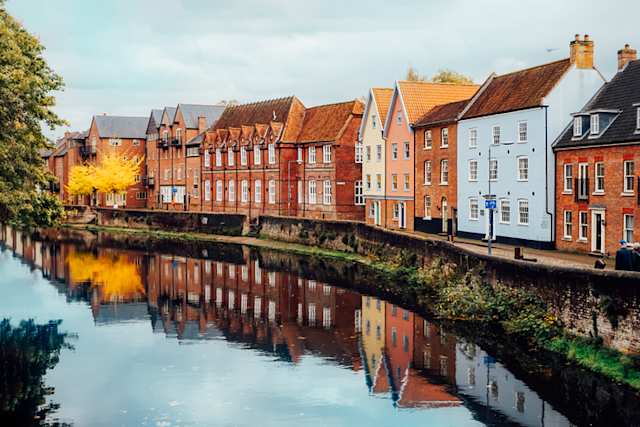
Street view with colourful brick houses near a river in Norwich, England in autumn
If you’re at all familiar with the British weather, you’ll know that summer is the best time for outdoor activities as this is when warm and sunny days are (somewhat) reliable. However, this does mean that Norfolk’s towns, beaches and tourist attractions can get packed with people making the most of their summer holidays. Don’t fancy the noise and the crowds? Spring or autumn are great alternatives, if you don’t mind bringing an umbrella and an extra layer.
In spring, the mild weather makes it an enjoyable time to explore the outdoors. Between March and May, average temperatures range between 9°C and 16°C, perfect for walking and cycling. Head down to the traditional seaside towns before the summer crowds get there – spend your days building sandcastles, eating fish and chips and getting competitive at the amusement arcades. Spring is also the best time for wildlife watching, as birds return to the waters and farm animals welcome their offspring. There are numerous farms to visit, such as Snettisham Park Farm, where kids will love feeding lambs and riding ponies.
Autumn is a magical time to visit Norfolk, with the countryside changing colours. It’s still a pleasant time to be outdoors, as the temperatures are similar to those in spring, ranging between 10°C and 19°C. The cooler temperatures mean there’s no better time for long-distance walks – Norfolk is pretty flat so don’t worry about anything too difficult. Make your way along the coast and past golden fields, taking in the vibrant autumn colours. The best part is that you’ll always find a cosy pub for a warm fire and a hot meal at the end of the day.
Track down Norfolk’s hidden gems
If you're willing to stray off the tourist trail, you'll find a plethora of unusual attractions and less-explored corners, which are ideal if you're wondering what crowded areas to avoid in Norfolk. Those interested in historical ruins should check out St Benet's Abbey, Norfolk's first Benedictine monastery. Reachable via a scenic walk from the village of Ludham, you'll find the remains of the 14th-century gatehouse. Meanwhile, footie fans can visit the Wellesley Recreation Ground to see the world's first football stand still in use today.
While there are plenty of marvellous museums such as the Norwich Museum and the Time and Tide Museum of Great Yarmouth Life, there are also smaller museums which are equally as fascinating, yet don’t see as many visitors. One of the most interesting ones is the RAF Air Defence Radar Museum in Neatishead. This is the only original Cold War operating room in England, with twenty-four exhibition rooms where you can step back in time and discover over 10,000 display items.
There are plenty of hidden gems in nature, too. The Devil’s Punchbowl is a spooky site near Thetford, a mysterious circular crater stretching 131 metres across. The pool fills and empties at random, which is attributed to the workings of the Devil. If you’re visiting in April, be sure to bag a ticket to see Norfolk Tulips in King’s Lynn. The endless rows of colourful tulips provide some brilliant photo opportunities.
Choose quiet towns to stay in
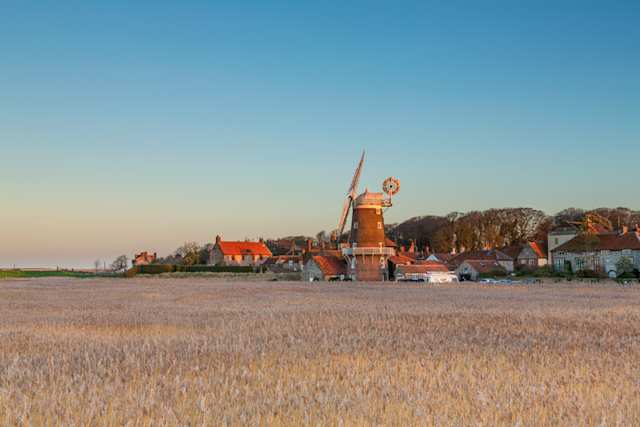
The famous windmill at Cley next the sea in Norfolk, England
Wondering where to stay in Norfolk? The county capital of Norwich may seem like an obvious choice, but while it has all the attractions, it also attracts many tourists – that's why it's at the top of our list of areas to avoid in Norfolk. Instead, opt for smaller market towns which offer a good mix of peacefulness and things to do. One of the best places to stay is Holt, a pretty town with grand Georgian buildings and a variety of independent shops, eateries and art galleries. On a wander through town, be sure to stop by Lees Yard and Hoppers Yard, former Victorian cottages which have been renovated into shops and cafes. Holt is surrounded by idyllic countryside, so there are plenty of walks you can do from your front door.
Reepham is another lovely market town wedged between the Wensum and Bure Valleys. Its streets are lined with 18th-century buildings, and a Wednesday market is still held in the marketplace. The town is a good base if you’re planning on walking or cycling the Marriott’s Way.
Want to stay by the sea but don’t fancy the crowds of towns like Great Yarmouth and Cromer? Heacham offers the best of both worlds, as it has a relaxing atmosphere but it’s just a seven-minute drive to the family-friendly resort of Hunstanton. You’ll have two beaches to choose from, one with a promenade and one that’s more rugged. When you’re not paddling in the sea or walking your dog along the beach, check out Norfolk Lavender, one of the village’s best attractions. Boasting over 40 hectares of lavender fields, the farm is home to an oil distillery, plant centre, farm shop and gift shop – it’s a fun day out for the whole family.
To completely disconnect, Cley next the Sea is a peaceful village right on the doorstep of the Cley Marshes nature reserve. Days here are best spent strolling along the beach and experiencing some of the country’s best birdwatching in the surrounding salt marshes and lagoons.
Explore the countryside

Marsh Harrier manoeuvring over the fields at Strumpshaw Fen RSPB, Norfolk
Norfolk is largely rural, with flat landscapes and big open skies. Its coastline, woodlands and waterways are the ideal places to escape the crowds if you're asking what areas to avoid in Norfolk and spend time in nature. One of the best places to explore is the Broads National Park, home to 200 kilometres of waterways spread over Norfolk and the neighbouring county of Suffolk. It’s great for relaxed watersports like kayaking, canoeing and paddleboarding, and you can glide past tranquil water meadows and picturesque villages.
For something a little more fast-paced, Norfolk’s beaches like Hunstanton, Heacham and Brancaster are the best spot for more exciting watersports like jet-skiing and windsurfing. When you’re not in the water, head to popular spots like Cromer, Blakeney and Wells-next-the-Sea to try your hand at crabbing, a typical Norfolk thing to do. Norfolk’s beaches are also known for their fossils, especially in West Runton, Hunstanton and Sheringham.
There’s plenty to do on land, too. The Norfolk Trails network has just under 2,000 kilometres of walking and cycling routes for all abilities. For epic coastal views, the Norfolk Coast Path runs for 135 kilometres through the stunning Norfolk Coast AONB. For an easier day walk, take the coastal wildlife route that takes you through Blakeney Village and Blakeney Freshes. Speaking of wildlife, Norfolk is known as the ‘birdwatching capital of Britain’ and is home to many RSPB sites such as Strumpshaw Fen, Snettisham Nature Reserve, Titchwell Marsh Nature Reserve and Berney Marshes & Breydon Water. You’ll be able to spot everything from kingfishers and barn owls to marsh harriers and stone curlews.
Swap the car for a bicycle
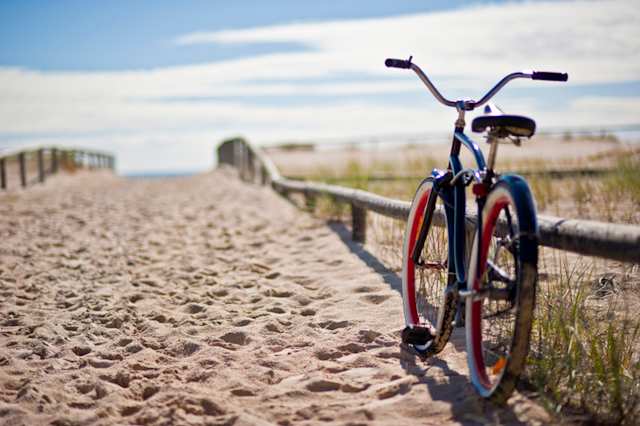
Blue bicycle left on a sandy beach on a sunny day
If you’re up for a little physical activity, ditching the car and hopping on your bike is a fantastic way to avoid the crowded areas in Norfolk. Rather than getting stuck on busy roads, you’ll be able to ride down narrow lanes that cars can’t access, take detours whenever you want and enjoy the fresh countryside air. Thankfully, the landscape is quite flat, so you don’t have to worry about too many ups and downs.
There are many cycling trails you can take, from easy routes you can do in a few hours, to multi-day rides. One of the best trails is the Wells and Holkham Circuit. This 16-kilometre loop starts in Wells-next-the-Sea and takes you along the Norfolk Coast Path into Holkham Park, the Deer Park and Holkham Hall. For a longer cycle, the Norfolk Coastal Cycleway stretches from King’s Lynn to Great Yarmouth via Cromer. Much of this route passes through an AONB, so expect nothing less than breathtaking views. Meanwhile, adventurous cyclists who enjoy off-road cycling will love the 20-kilometre Cromer to Felbrigg route, which boasts a mix of hills and rocky landscapes.



